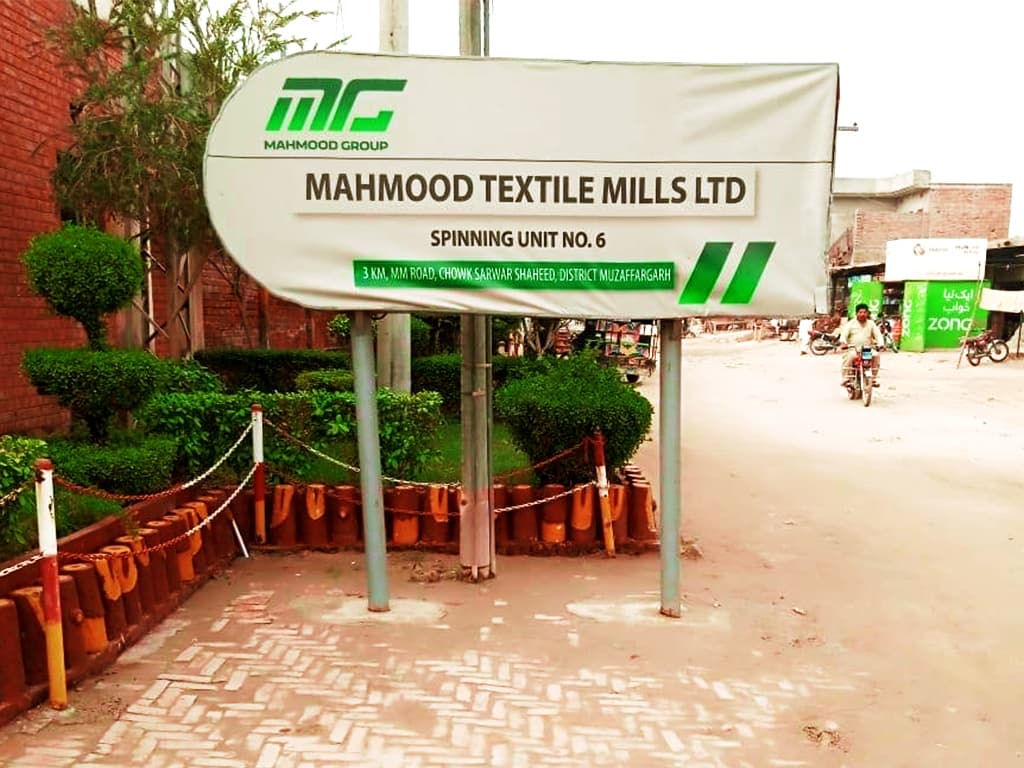Mahmood Textile Mills Limited (PSX: MEHT) was established in 1970 as a public limited company under the Companies Act, 1913 (now, Companies Act, 2017). The company’s principal business is to manufacture and sell yarn and grey cloth. The company also generates electricity. Its mills are located in the province of Punjab.
Shareholding pattern

Mehmood Textile Mills Limited is primarily owned by its directors, CEO, their spouses and minor children, as nearly 43 percent of the shares are held under this category. Within this category, Mr. Khawaja Jalaluddin, a director of the company holds the most shares. The next key category is the local general public that collectively owns 50 percent of the shares in the company. The remaining about 7 percent shares are distributed with the rest of the shareholder categories.
Historical operational performance
Revenue, for a large part has been increasing at varying rates, with the exception of FY12 and FY15 and FY16. The effect of this was also seen on profit margins, that fell in FY15 and FY16 and picked henceforth.

In FY15, the company saw the highest decline in revenue of 11 percent. This was attributed to a fall in yarn export to China due to lower demand. Additionally, cotton prices also remained volatile, and reduced after the cotton season, which adversely affected yarn prices as well. Cost of production also increased to a high of 93 percent of the revenue, reducing gross margins. During the year, other income doubled which kept the net margins from declining significantly. The higher other income was brought about by “fair value gain on re-measurement of short-term investments”.

Revenue fell during FY16 as well, however, only marginally by less than 1 percent. The slow-down in the Chinese economy had repercussions for Pakistan’s textile exports, with China being the main buyer. Secondly, other regional peers, such as India and Bangladesh kept their currency devalued, which made their exports more competitive. In addition, their cost of production was also comparatively low which allowed them to sell at a price which was not possible for Pakistani manufacturers, thus the latter lost competition in the global market. With cost of production showing a marginal decline, there was an improvement in gross margins, which was eventually eroded by a loss from associates. Note also that last year’s margins were lifted by one-time source of other income, which was absent this year. Thus, the company incurred a loss for the first time in a decade.

Mahmood Textile Mills saw its revenue improving in FY17 as it increased by 15 percent. Both export sales and domestic sales improved year on year. This was attributed to product development; installed capacity also increased for the yarn segment along with actual production. Cost of production, on the other hand, increased to nearly 94 percent of revenue, the highest seen in a decade of operation. Higher electricity tariff was to be blamed. Moreover, the company’s mills are located in Punjab which have faced the most electricity shortage, forcing manufacturers to resort to other more expensive alternatives. However, net margin improved due to profit from associates which was in loss last year.

Topline continued to climb up in FY18 as it grew by 15 percent. Both export sales and domestic sales registered an incline. This can be attributed to a currency depreciation that made exports favourable in the international market. Cost of production reduced very marginally to claim 93 percent of revenue. The higher revenue did not convert into a higher bottomline due to an escalation of finance costs- a consequence of high markup rates. In addition, stock market was also depressed because of which Rs 285 million loss had to be accounted for up on revaluation of shares.

Mahmood Textile Mills witnessed the highest growth in revenue in FY19 at 34 percent. Increase in cloth sales surpassed the increase in yarn sales. Cost of production reduced to 89 percent of revenue. This was not seen, at least in the last five years. This allowed gross margins to improve. Despite the increase in finance costs and other expenses, net margin was notably supported by profit from associates; the latter increased to more than Rs 1 billion. Thus, bottomline reached to Rs 831 million- the last time this level was seen was in FY11.
Quarterly results and future outlook
Mahmood Textile Mills saw their revenue increasing by 14 percent year on year during 9MFY20. While the breakdown of sales is not known, given that the company is export-oriented, it can be presumed that export sales dominated the topline. However, the higher revenue brought with it a more than corresponding increase in costs, reducing gross margins. But net margins were eventually lifted due to other income and profit from associates which was nil in the corresponding period last year.

The textile players have unanimously been asking for supportive policies, and an improvement in cotton production which has over the years declined due to which the shortfall has to be met through imports. This in turn raises their cost of production, further rendering them uncompetitive in the global scenario. Further, due to the ongoing pandemic, the company has had to halt operations, whereas trade has also been affected which will inevitably create an adverse impact on the financials of the company.


























Comments
Comments are closed.